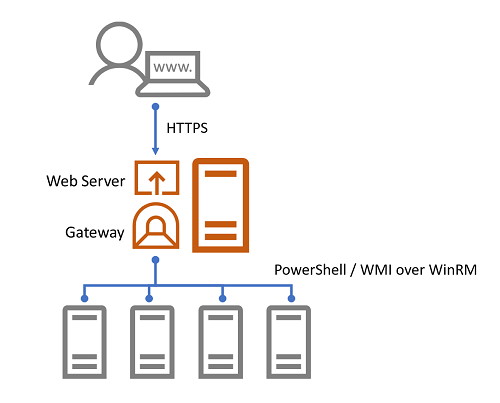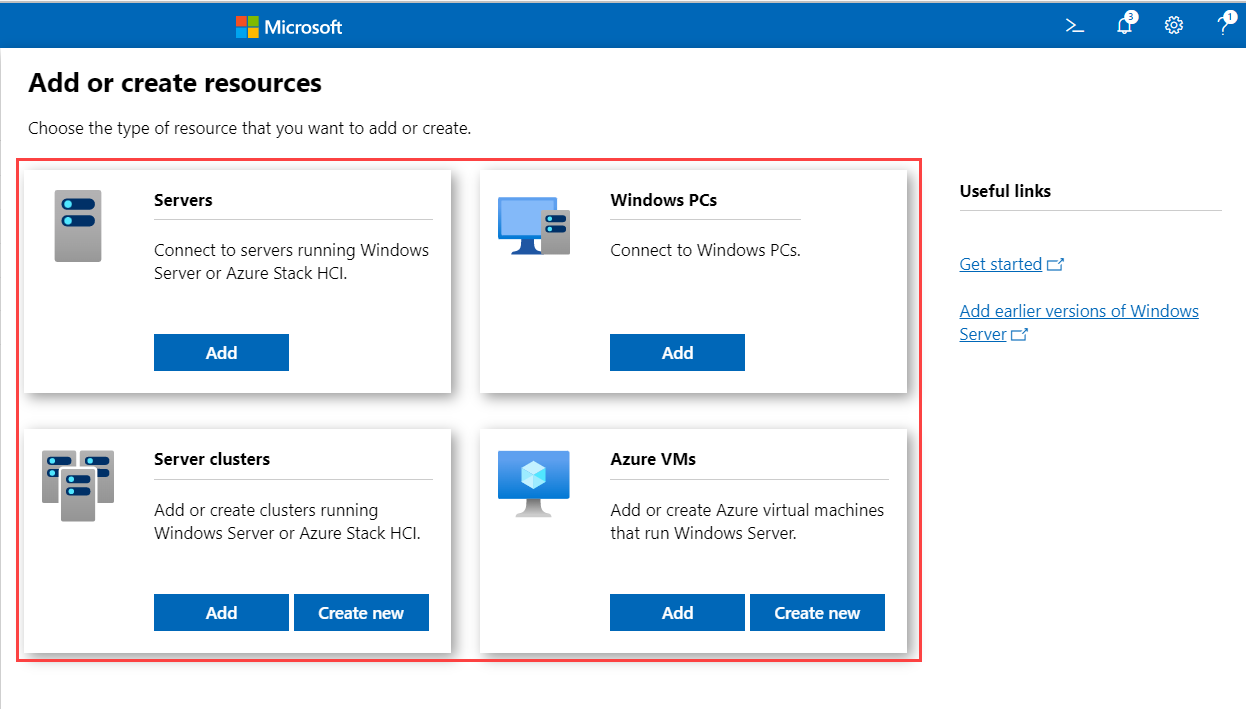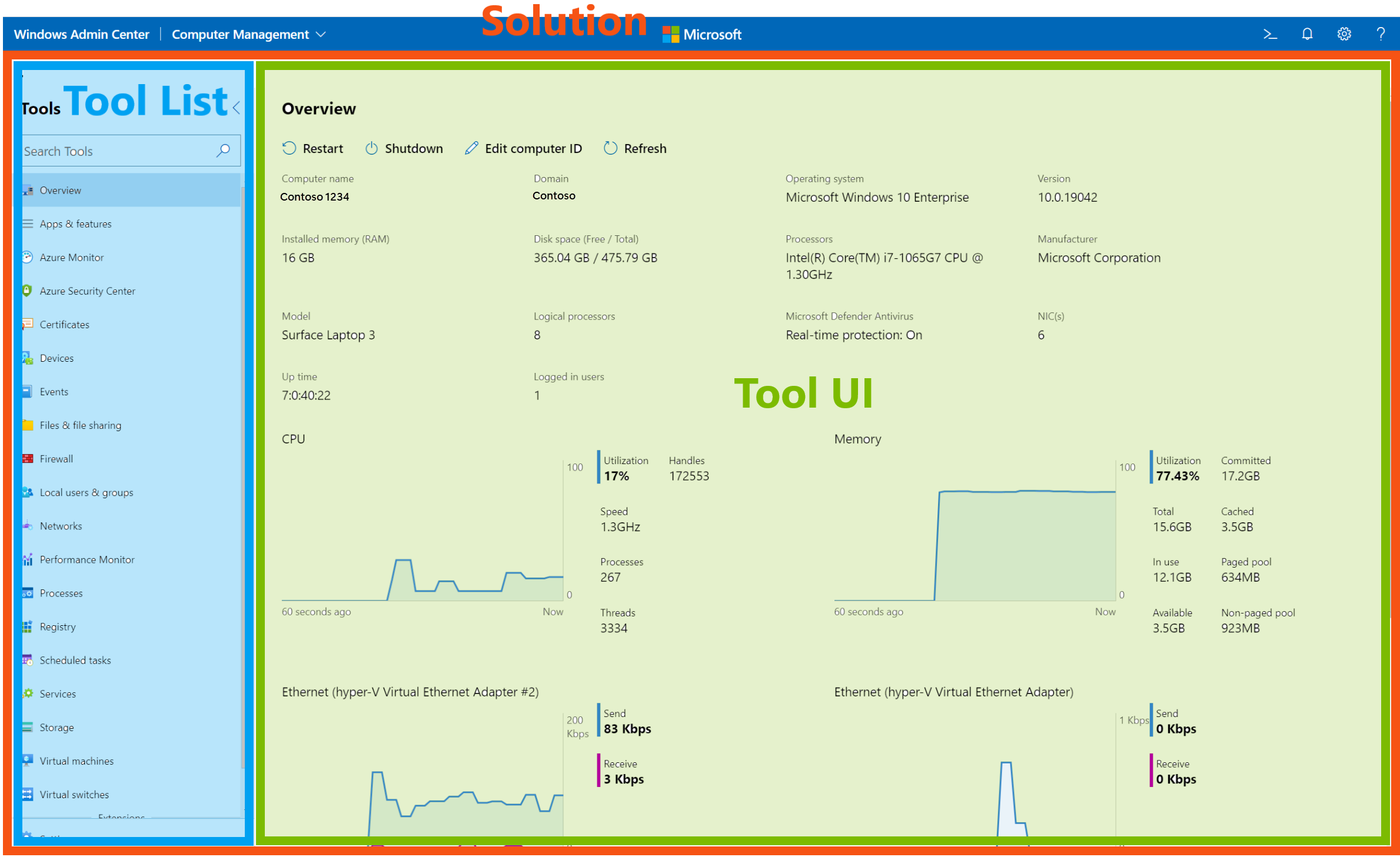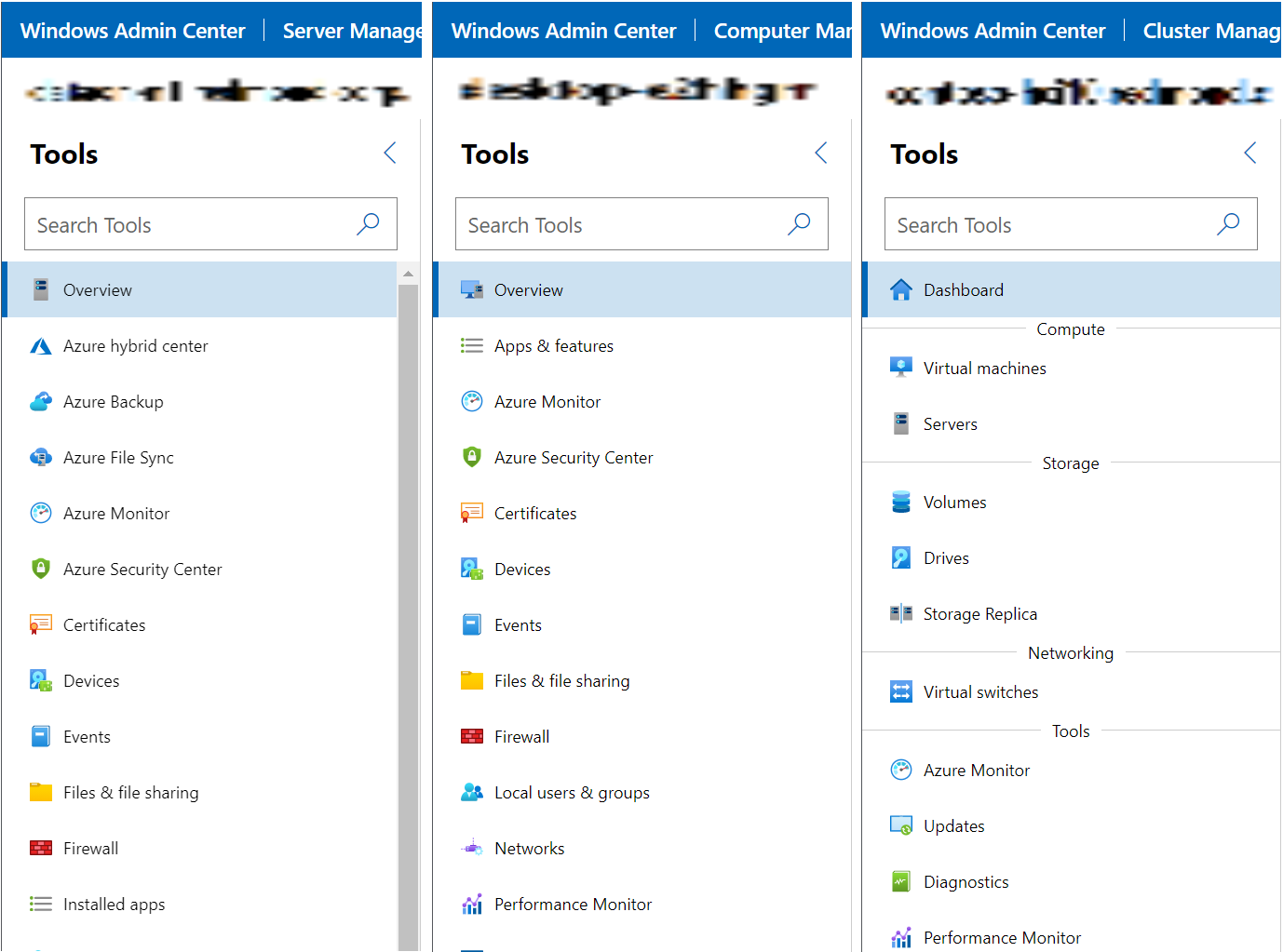Informatie over Extensies voor Windows-beheercentrum
Als u nog niet bekend bent met de werking van het Windows-beheercentrum, beginnen we met de architectuur op hoog niveau. Het Windows-beheercentrum bestaat uit twee hoofdonderdelen:
- Lichtgewicht webservice die webpagina's van het Windows-beheercentrum aan webbrowseraanvragen levert.
- Gateway-onderdeel die luistert naar REST API-aanvragen van de webpagina's en WMI-aanroepen of PowerShell-scripts doorsturen die moeten worden uitgevoerd op een doelserver of cluster.

De windows Admin Center UI-webpagina's die door de webservice worden geleverd, hebben twee hoofdonderdelen van de gebruikersinterface vanuit het perspectief van uitbreidbaarheid, oplossingen en hulpprogramma's, die worden geïmplementeerd als extensies, en een derde extensietype genaamd gatewayinvoegtoepassingen.
Uitbreidingen van oplossingen
In het startscherm van het Windows-beheercentrum kunt u standaard verbindingen toevoegen die een van de vier typen zijn: Windows Server-verbindingen, Windows-pc-verbindingen, serverclusterverbindingen en Azure-VM-verbindingen. Zodra er een verbinding is toegevoegd, worden de naam en het type van de verbinding weergegeven in het startscherm. Als u op de verbindingsnaam klikt, wordt geprobeerd verbinding te maken met de doelserver of het doelcluster en vervolgens de gebruikersinterface voor de verbinding te laden.

Elk verbindingstype wordt toegewezen aan een oplossing en oplossingen worden gedefinieerd via een type extensie genaamd 'solution'-extensies. Oplossingen definiëren doorgaans een uniek type object dat u wilt beheren via Het Windows-beheercentrum, zoals servers, pc's of failoverclusters. U kunt ook een nieuwe oplossing definiëren voor het verbinden met en beheren van andere apparaten, zoals netwerkswitches en Linux-servers, of zelfs services zoals Extern bureaublad-services.
Hulpprogramma-extensies
Wanneer u op een verbinding in het startscherm van het Windows-beheercentrum klikt en verbinding maakt, wordt de oplossingsextensie voor het geselecteerde verbindingstype geladen en krijgt u vervolgens de gebruikersinterface van de oplossing te zien, inclusief een lijst met hulpprogramma's in het linkernavigatiedeelvenster. Wanneer u op een hulpprogramma klikt, wordt de gebruikersinterface van het hulpprogramma geladen en weergegeven in het rechterdeelvenster.

Elk hulpprogramma wordt gedefinieerd via een tweede type extensie met de naam 'tool'-extensies. Wanneer een hulpprogramma wordt geladen, kan het WMI-aanroepen of PowerShell-scripts uitvoeren op een doelserver of cluster en informatie weergeven in de gebruikersinterface of opdrachten uitvoeren op basis van gebruikersinvoer. Een hulpprogramma-extensie definieert voor welke oplossingen deze moeten worden weergegeven, wat resulteert in een andere set hulpprogramma's voor elke oplossing. Als u een nieuwe oplossingsextensie maakt, moet u ook een of meer hulpprogramma-extensies schrijven die functionaliteit bieden voor de oplossing.

Gateway-invoegtoepassingen
De gatewayservice maakt REST API's beschikbaar voor de gebruikersinterface om opdrachten en scripts aan te roepen en door te sturen die op het doel moeten worden uitgevoerd. De gatewayservice kan worden uitgebreid door gatewayinvoegtoepassingen die ondersteuning bieden voor verschillende protocollen. Windows Admin Center is vooraf verpakt met twee gateway-invoegtoepassingen, een voor het uitvoeren van PowerShell-scripts en de andere voor WMI-opdrachten. Als u met het doel moet communiceren via een ander protocol dan PowerShell of WMI, zoals REST, kunt u hiervoor een gateway-invoegtoepassing bouwen.
Volgende stappen
Afhankelijk van de mogelijkheden die u wilt bouwen in het Windows-beheercentrum, is het bouwen van een hulpprogramma-extensie voor een bestaande server- of clusteroplossing mogelijk voldoende en is dit de eenvoudigste eerste stap in het bouwen van extensies. Als uw functie echter bedoeld is voor het beheren van een apparaat, service of iets volledig nieuws, in plaats van een server of cluster, kunt u overwegen een oplossingsuitbreiding te bouwen met een of meer hulpprogramma's. En als u ten slotte met het doel moet communiceren via een ander protocol dan WMI of PowerShell, moet u een gateway-invoegtoepassing bouwen. Lees verder over voor meer informatie over het instellen van uw ontwikkelomgeving en het schrijven van uw eerste extensie.